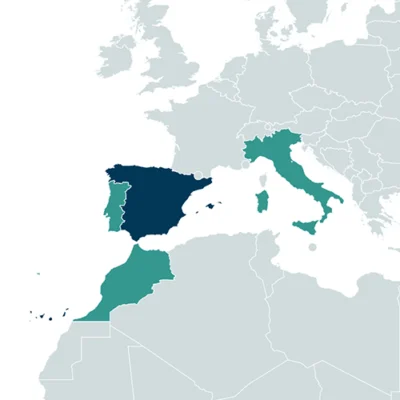Preserving the singularity of Mediterranean high-mountain biodiversity hotspots: a NbS approach
Call
Duration
01/03/2025 – 29/02/2028
Total grant
Approx. 730 thsd. €
More information
Regino Zamora, rzamora@ugr.es
Partners of the project
- Department of Ecology, University of Granada, Granada, Spain
- Institute of Geosciences and Georesources, National Research Council, Roma, Italy
- Alpine Wildlife Office, Gran Paradiso National Park, Valle d’Aosta, Italy
- Department Bioscience and Territory/EnvixLab, University of Molise, Campobasso, Italy
- Department of Life Sciences, University of Coimbra, Coimbra, Portugal
- International Water Research Institute, Mohammed VI Polytechnic University, Benguerir, Morocco
- Soil-Water & Biodiversity Department / Lab. Botany & Ecology, National Forest Engineering School, Sale, Morocco
- Georesources, Geoenvironment and Civil Engineering Laboratory, Cadi Ayyad University, Marrakech, Morocco

Context
High-mountain wet grasslands represent habitats with the highest concentration of endemic diversity in the Mediterranean. The fact that they are contrasting and hyper diverse communities, subjected to strong pressures that threaten their conservation, makes them paired ecological sensors in scenarios of global change. They represent a real cocktail of exceptional natural values and environmental problems magnified and highly concentrated in space. The threats they suffer are both global (climate) and local (herbivory, tourist pressure). The main objective of our project is to reverse this process of wet meadows reduction and loss of connectivity using NbS approach for maintaining and restoring wet meadows in Mediterranean mountains.
Main objectives
The objective of our project is to diagnose and mitigate the real impact that climatic change (mostly drought), in combination with local drivers (herbivory and touristic pressure), is having on the megadiverse humid ecosystems of Mediterranean high mountains. To this purpose, we will analyse the ecological responses and community dynamics, using essential ecosystem variables as indicators, of different Mediterranean mountain ecosystems across a large gradient of ecological conditions.
Our goal is to use different NbS, specifically adapted to each study site, to maintain and restore biodiversity and ecological functions in Mediterranean mountain wet meadows and snowbed grasslands, by mitigating and reversing the processes of reduction in the area occupied by these habitats, as well as of decrease in ecological connectivity, and the subsequent biodiversity loss.
As a result, we will identify and create climate-resilient green infrastructures and associated science-policy-society-enterprise interfaces to effectively and adaptively address the social, economic and environmental challenges of these areas. NbS will help to mitigate multiple hazards in mountains (e.g. reduction of water availability, landslides, water stress, food insecurity) while generating a range of co-benefits (e.g. biodiversity conservation, income-generating opportunities, recreation, etc.), sequestering carbon, and increasing resilience against the impacts of a changing climate.
Main activities
- WP1: To assess the state of health of mountain wet meadows and snowbed grasslands and their biodiversity by enhancing the use of information and communication technologies and artificial intelligence resources for the development of essential variables and integrated diagnosis (integrating field and remote sensing information).
- WP2: To implement mitigation, adaptation and restoration measures for biodiversity and its ecosystem functions and services using NbS to preserve the natural and cultural heritage of mountains, using scientific and local knowledge, developing pilot projects of adaptive management, exportable to other mountains.
- WP3: To develop local and international collaboration in the Mediterranean Basin, for the diffusion of innovative practices and solutions, the permanent participation and training of the different actors by the co-design of actions, the use, integration and visibility of open information, communication, and education, and by citizens’ participation and shared governance.